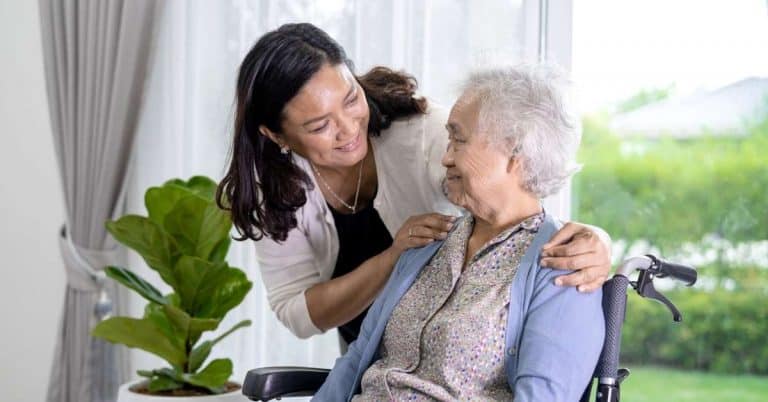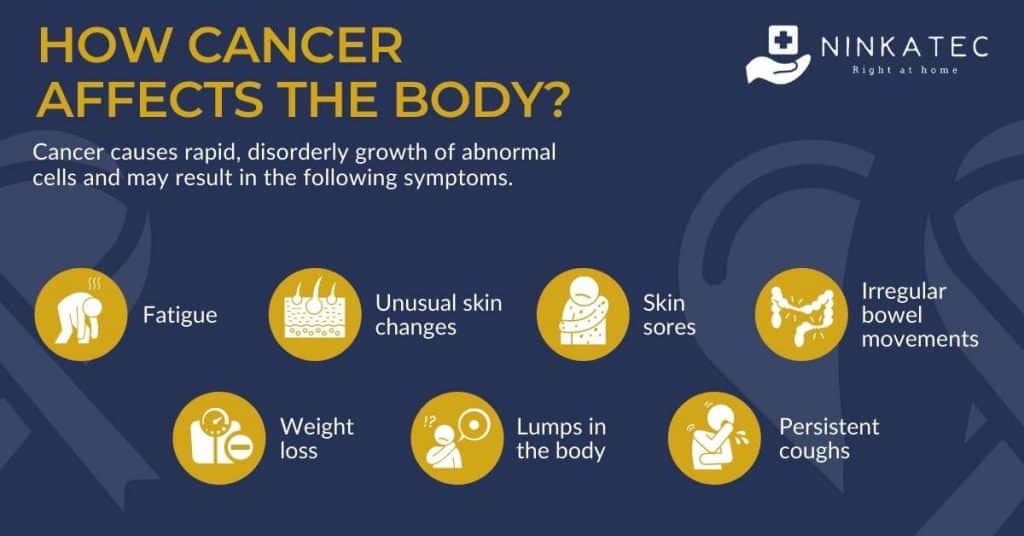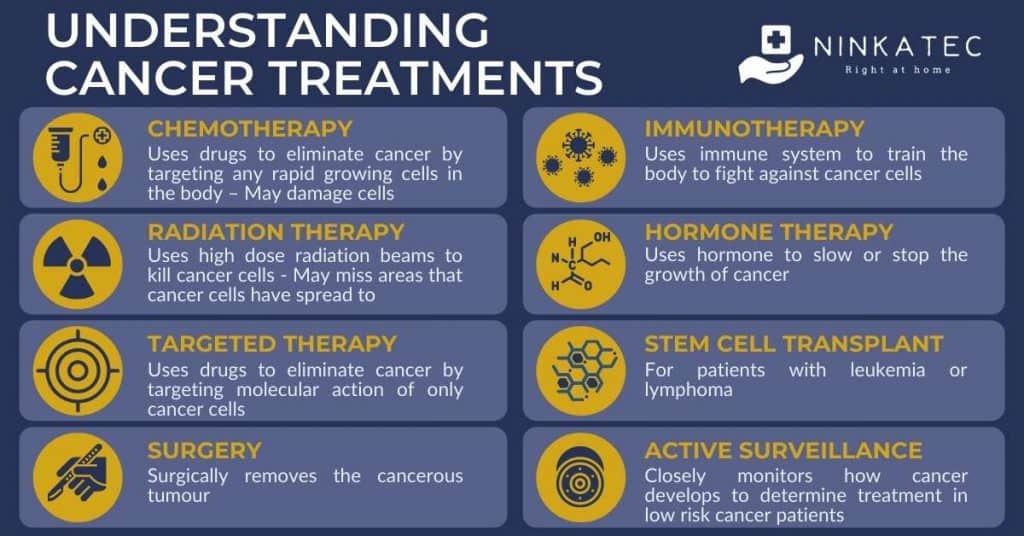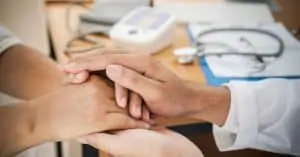In Singapore, one out of five people is at risk of developing cancer in their lifetime. While recovery rates have significantly improved over the past decade, its prevalence continues to pose a serious threat to the health of the general population.
In this guide, we discuss how individuals can seek the best medical support and cope with the physical and psychological effects of cancer. Keep reading to learn which of the available treatment and care options are most suited for you or your loved ones.
Table of Contents
How Cancer Affects the Body
Cancer refers to the rapid, disorderly growth of abnormal cells that spread throughout the body. Its symptoms may include fatigue, weight loss, unusual skin changes, lumps in the body, skin sores, persistent coughs, or irregular bowel movements.
While lifestyle and environmental factors may contribute to cancer cell growth, some individuals are more susceptible to developing the disease due to their genetics. Left untreated, cancer impairs vital organs from performing essential bodily functions which causes life-threatening health complications.
Medical Guidance on the Best Treatment Path
Once an individual has been diagnosed with cancer, it’s important to immediately consult a trusted doctor on the available treatment options. The diagnosis for treatment will be based on the patient’s type of cancer (i.e. which body part the cancer cells originated from) and its severity or stage.
Selecting an experienced doctor who specialises in the type of cancer that either you or a loved one has been diagnosed with ensures their expertise in treating the disease. However, if the suggested treatment path is particularly high-risk, it’s advisable to seek a second opinion from another doctor.
Researching the Specific Type of Cancer
It’s necessary to take the time to gather as much information as possible about the type of cancer in question to carefully weigh your options. Consider looking up studies and the statistics of which treatment combinations have had the highest outcomes for recovery with the most minimal risks. This level of involvement allows you to address any concerns so that you’re fully aware of the best treatment path for yourself or your loved one.
Common Cancer Treatments & Their Risks
Battling cancer or supporting a loved one through the process is an understandably frightening and stressful experience. Fortunately, greater advancement in medical technology has increased recovery and survival rates of this debilitating disease. Here are some of the most commonly used cancer treatments and the risks involved:
- Chemotherapy - This procedure shrinks tumours and/or eliminates cancer by targeting any cell in the body that exhibits rapid growth – a characteristic of cancer cells. However, it may also damage healthy fast-growing cells resulting in hair loss, skin sensitivity, infections and low blood platelet count.
- Radiation therapy - This treatment uses X-rays or alternative high-energy beams aimed at one part of the body to kill cancer cells. While it’s less likely to damage healthy cells overall, it may miss other areas that cancer cells may have spread to.
- Surgery - The surgical removal of malignant tumours is often recommended to prevent cancer from spreading further, particularly in the earlier stages. It may seem invasive but it reduces the risk of cancer remissions.
- Targeted therapy - This therapy also uses drug to fight against cancer cells, and therefore may be grouped in chemotherapy. However, it differs from standard chemotherapy in its highly targeted approach. Instead of targeting all fast diviving cells including cancer cells, targeted therapy seeks to target molecular actions that are specific to the cancerous cells. Doctors sometimes prescribe targeted therapy in conjunction with chemotherapy, radiotherapy or other therapies.
- Immunotherapy - This is commonly used when a patient doesn’t respond well to chemo or radiation. It uses the immune system to train the patient’s body to recognise, remember, and attack cancer cells long-term.
- Hormone therapy - This treatment targets cancer at a hormonal level. It prevents cancer cells from receiving the essential hormones needed for its growth. As a result, cancer cells are unable to replicate and grow.
- Stem cell transplant (Bone marrow transplant) - For patients with leukemia or lymphoma
- Active surveillance - This is one approach used to manage prostate cancer and has become a viable option for other low-risk cancer patients. By closely monitoring how cancer develops and performing regular biopsies, doctors can determine whether a patient requires treatment or not.
Types of Cancer Care Services
Nursing care and personal care are the most common cancer care services that cancer patients are in need of during recovery. Nursing care may include wound care after a surgery, or IV therapy to provide cancer patients with the needed medication, nutrition or fluid. Personal care such as food preparation or mobility and exercising assistance is required among cancer patients who are not well enough to perform these activities by themselves.
Palliative care aims to promote the quality of life of patients with terminal conditions. Often, individuals who receive palliative care have already been given a limited number of months left to live. This care option ensures that patients feel comfortable, happy, and secure in their remaining time. This can be done in a hospital, nursing facility, or in the comfort of a patient’s home.
Why Cancer Patients Require Additional Assistance
Dealing with cancer takes a toll not only on the individual’s health but also on one’s motivation and well-being. While doctors do their best to treat the disease, it’s important for patients to keep their immune systems strong and continue to prioritise proper self-care.
Managing Physical Side Effects
Cancer treatments are usually accompanied by side effects that cause individuals to feel sickly. Patients may need to take prescribed medication for symptoms like nausea, mouth dryness, and physical pain to alleviate some of their discomforts.
Additionally, maintaining a nutrient-rich diet is recommended in sustaining one’s energy levels which tend to become depleted due to ongoing treatments. With their doctor’s supervision, patients may also perform low-impact exercises and stretches to keep their bodies strong throughout the process.
Coping with the Psychological Aspects
Fighting cancer can feel like an isolating experience for a lot of patients. It’s important for individuals to stay in close contact with loved ones and to find an outlet to express their feelings or thoughts regarding the situation.
According to a study, seeking emotional support and reducing stressors may influence one’s chances for survival. Although these studies are still in their early stages, researchers find that using social coping mechanisms generally improve patients’ perceived quality of life.
How Ninkatec Supports Cancer Patients
Ninkatec provides personalised home care services for patients with various medical conditions. As one of Singapore’s most trusted home care companies, our goal is to restore meaningful living and give a sense of control to patients who are dealing with serious illnesses.
Fighting cancer is an extremely distressing experience for patients and their loved ones. To support families, Ninkatec creates a safe and comfortable environment in the patient’s home to meet their individualised needs.
Here are our cost-effective medical care plans:
- Right At Home - best suited for patients with chronic conditions who require caregiving assistance.
- Close Connect - recommended for cancer patients recovering from surgery or undergoing treatment that requires daily medical support.
- Virtual Care - includes remote medical supervision and 24/7 monitoring of patients.
Stay Strong with Ninkatec
Battling cancer is a tiring and emotional process that nobody should go through alone. With the support of loved ones and advice from medical professionals, choosing the best treatment path may become less daunting for patients.
By scheduling an appointment with Ninkatec, you can learn more about the viable options in receiving optimal healthcare for yourself or your loved ones.










